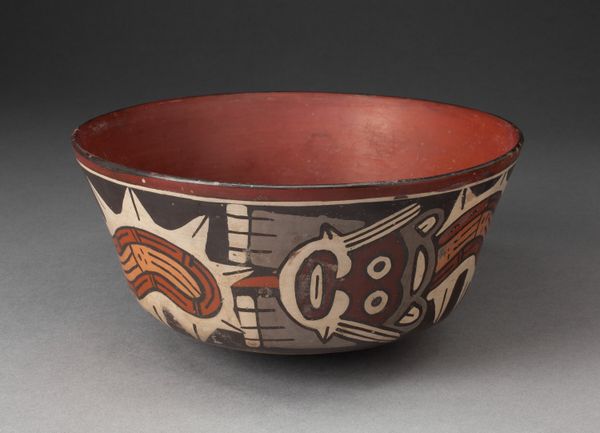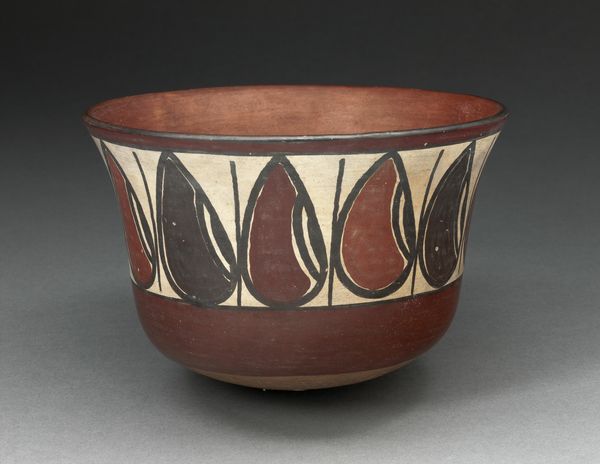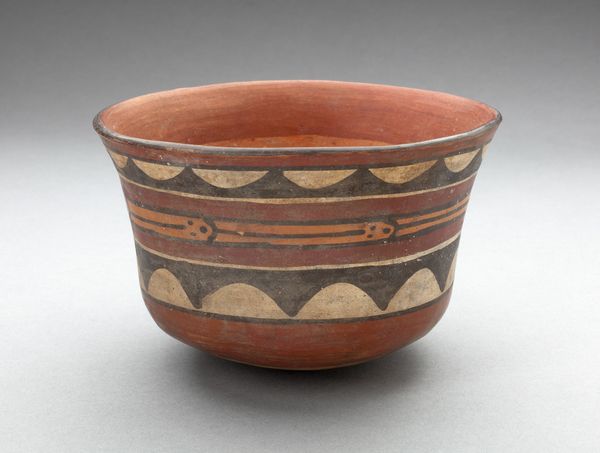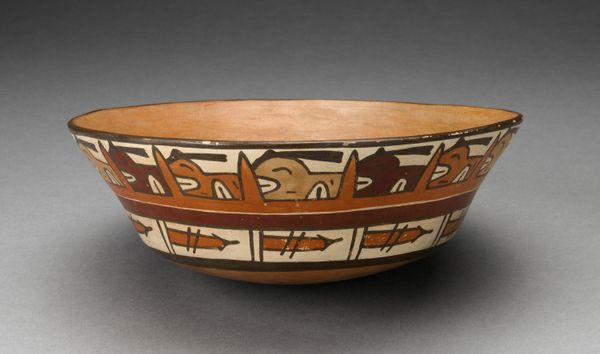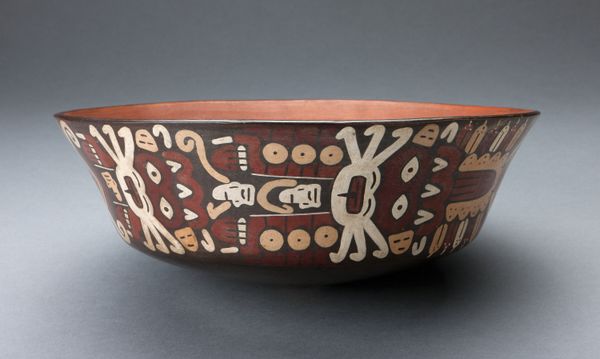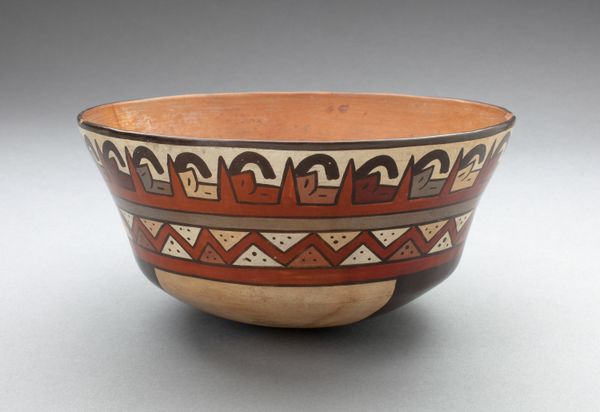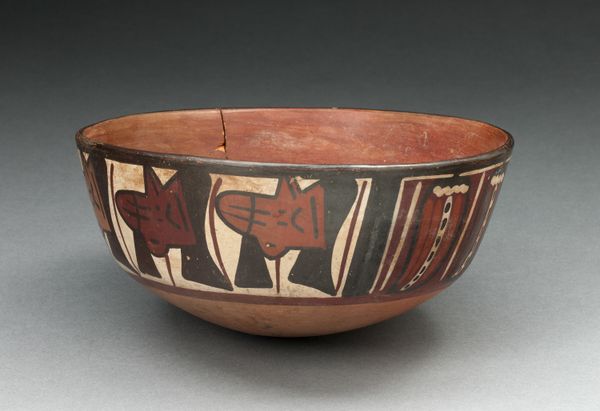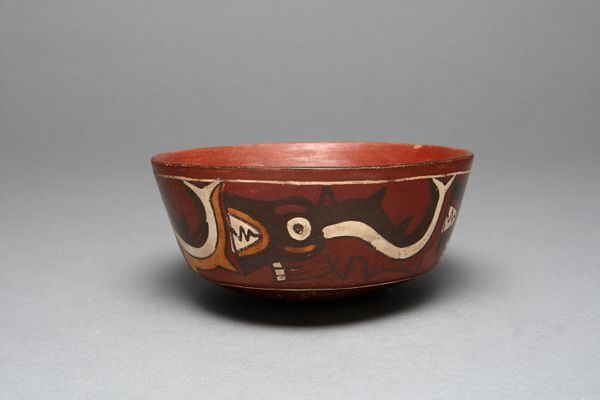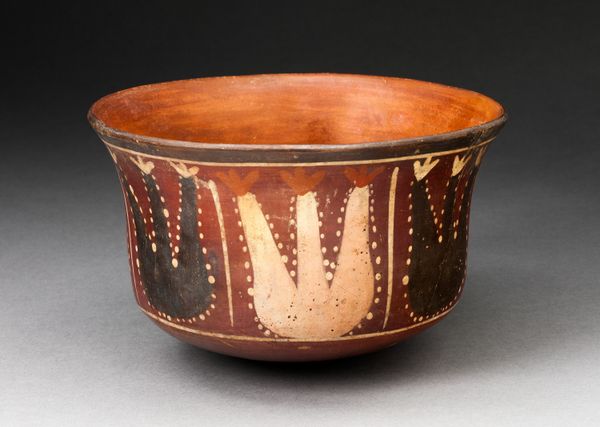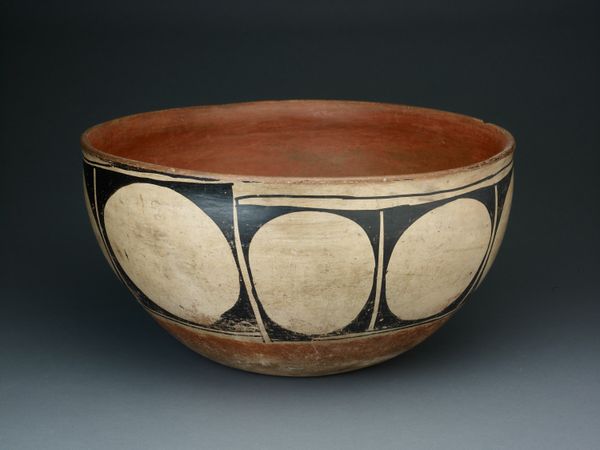
ceramic, earthenware
#
ceramic
#
earthenware
#
ceramic
#
indigenous-americas
Dimensions: 9.8 × 12.5 cm (3 7/16 × 5 15/16 in.)
Copyright: Public Domain
This is a ceramic bowl, made by the Nazca people of ancient Peru. The band of abstract spiders around its rim offers a window into the worldview of this culture. The Nazca civilization flourished in the arid coastal region of Peru, between 100 BCE and 800 CE. Their art provides insights into their society, religion, and relationship with the environment. The spider motif, rendered in stylized forms, may have held symbolic significance, possibly related to fertility, agriculture, or the cosmos. The Nazca were deeply connected to their environment and relied on complex irrigation systems to sustain agriculture in the desert. The spider, as a creature associated with weaving and the creation of intricate webs, may have symbolized the interconnectedness of life and the importance of maintaining balance in nature. The study of Nazca pottery involves a multi-disciplinary approach, drawing on archaeology, anthropology, and art history. By examining the iconography, style, and context of these objects, we can gain a deeper understanding of the beliefs and values of this ancient culture.
Comments
No comments
Be the first to comment and join the conversation on the ultimate creative platform.
